
• Designer Beads by Jess
• Pastor’s Corner: A Psalm for Us Sheep
• Should We “Cure” Autism? • Local Events and More






• Designer Beads by Jess
• Pastor’s Corner: A Psalm for Us Sheep
• Should We “Cure” Autism? • Local Events and More




Adrenaline is the perfect place for an adventure!
Have a blast jumping on trampolines (of course), channeling your inner ninja warrior, making it to the top of the climbing wall, or challenging your friends in jousting.
We are the largest indoor adventure park in Indiana, with 50,000 square feet of attractions, including our ALL NEW ropes course, warped wall, stunt fall, all sports course, harnessed climbing wall and MORE!!
Sensory Friendly Play every Monday from 11:00 a.m. - 4:00 p.m. Call or email to reserve your spot!
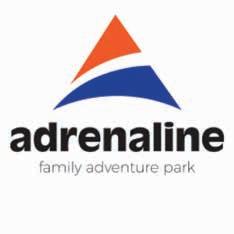
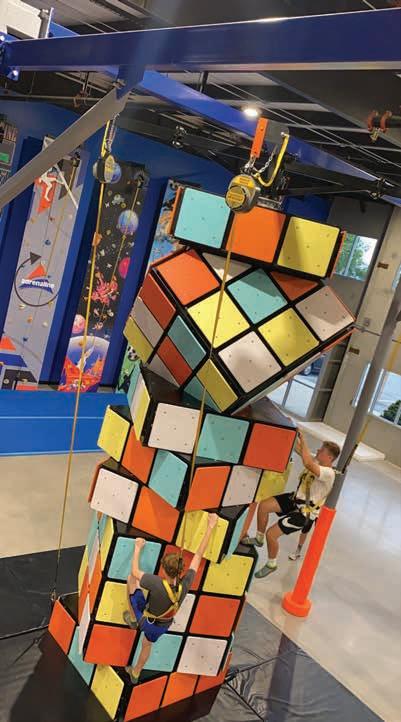

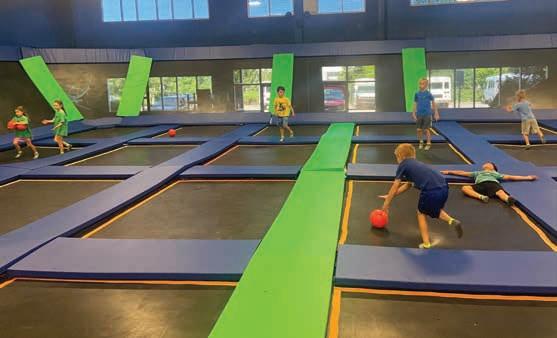
317-977-2375
317-676-4222
800-609-8448
877-241-8144
800-545-7763
800-545-7763
800-622-4968
888-673-0002
800-403-0864
317-232-7800
317-925-7617
877-511-1144
317-466-1000
Arc of Indiana www.arcind.org
Autism Community Connection www.autismcc-in.org
Autism Society of Indiana
Blind and Visually Impaired Services (BVIS) Bureau of Developmental Disabilities Services (BDDS) Bureau of Rehabilitation Services (BRS) Deaf and Hard of Hearing Services (DHHS) DHHSHelp@fssa/in.gov
Disability Determination Bureau Division of Aging (IDA) Division of Family Resources (DFR) Division of Mental Health and Addiction Down Syndrome Indiana Early Childhood and Out of School Learning (OECOSL) Easterseals Crossroads https://eastersealscrossroads.org

911
800-545-7763
574-234-7101
317-232-0570
844-323-4636
317-233-4454
317-232-7770
812-855-6508
317-233-1325
844-446-7452
855-641-8382
800-332-4433
800-457-4584
317-232-7770
800-772-1213
800-772-1213
877-851-4106
317-871-4032
800-545-7763
Emergency First Steps
INSOURCE – www.insource.org
Indiana Department of Education: Office of Special Education – www.doe.in.gov/specialed
Indiana Family to Family - www.inf2f.org
Indiana Family and Social Services Administration (FSSA) – www.in.gov/fssa/index.htm
Indiana Governor’s Council for People with Disabilities (GPCPD)
Indiana Resource Center for Autism
Indiana State Department of Health
Indiana Statewide Independent Living Council (INSILC)
Indiana Works
INSOURCE – http://insource.org/
Medicaid Disability
Medicaid Waivers
Social Security Administration (SSA)
Social Security Disability Insurance (SSDI)
Special Education Questions
United Cerebral Palsy Association of Greater Indiana Vocational Rehabilitation Services (VR)




Scan to view the past issues of Special Needs Living

Scan or text the letters SNL to the number 55433 — to get the digital copy of SNL through text message
DISCLAIMER: Any articles included in this publication and/or opinions expressed therein do not necessarily reflect the views of The N2 Company d/b/a N2 Publishing but remain solely those of the author(s). The paid advertisements contained within the Special Needs Living magazine are not endorsed or recommended by The N2 Company or the publisher. Therefore, neither The N2 Company nor the publisher may be held liable or responsible for business practices of these companies. NOTE: When community events take place, photographers may be present to take photos for that event and they may be used in this publication.
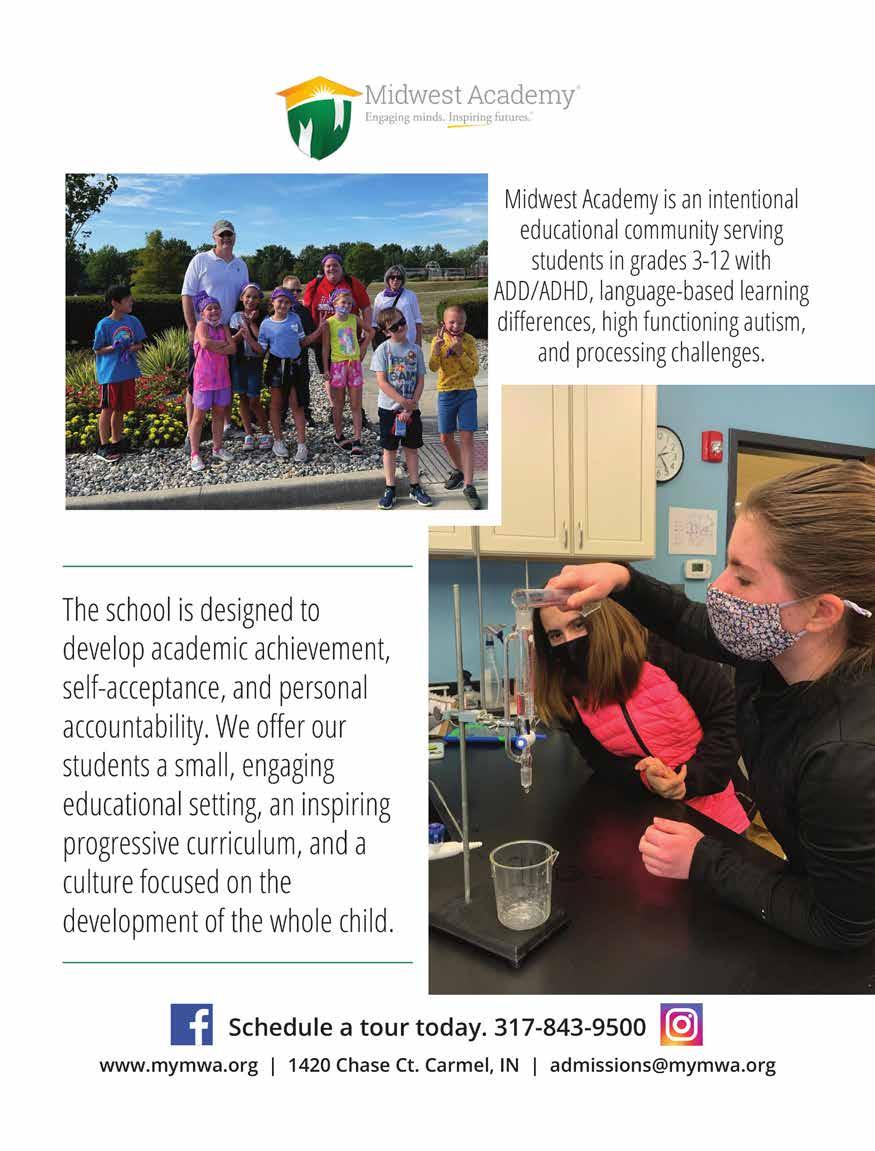
This section is here to give our readers easier access when searching for a trusted neighborhood vendor to use. Get to know the businesses who make this magazine possible. Please support them in return and thank them if you get the chance!
ABA & COMPREHENSIVE SERVICES
K1ds Count Therapy (317) 520-4748
ABA SERVICES
Applied Behavior Center for Autism (317) 849-5437
Autism Center for Enrichment (317) 436-7080
BehaviorWorks ABA (317) 731-7777
Mindful and Modern ABA Therapies (317) 827-7777
Piece by Piece Autism Center (765) 481-2261
The Umbrella Center (463) 701-0909
ABA/COMPREHENSIVE SERVICES
The Hope Source (317) 578-0410
ACCOUNTING/PAYROLL/TAXES
Borshoff Consulting LLC.
Sherry Borshoff (317) 902-6539
ADVOCACY/EVALUATIONS
PEAS for Kids (920) 980-1172
ATTORNEY
Hostetter & Associates (317) 852-2422
ATTORNEY-WILLS/TRUSTS/ ESTATE PLANNING
Law Office of Elizabeth A. Homes LLC (317) 660-5004
CASE MANAGEMENT
Connections Case Management (317) 440-0637
IPMG - Indiana Professional Management Group (866) 672-4764
CAT CARE & SITTING
Bastet Cat Care & Sitting (317) 919-1948
CBD SUPPLIER
Indy CBD Plus (317) 961-0191
COUNSELING SERVICE
Mark 2 Ministries (317) 777-8070
DAY / BEHAVIORAL SERVICES
Developmental Disabilities Systems INC. - DDSI (317) 477-8240
DENTAL CARE
Children’s Dental Center (317) 842-8453
ELECTRICAL SERVICES
21 Electric (317) 449-0021
FINANCIAL
Charter Advisory Corporation
David Yearwood (317) 844-7416
Munder Financial
James Munder (317) 238-6621
WestPoint Financial Group
Gordon Homes (317) 567-2005
FUNCTIONAL MEDICINE
Wholestic Nutrition (317) 429-0111
GYMNASTICS
Body by GymRoots Studio (317) 579-9300
HEALTH & WELLNESS
LifeVantage - Team Richards
Kristin Richards (317) 698-5264
HOME CARE
Amiable Home Care Inc. (317) 802-1746
HOME CARE SERVICES
SafeInHome (855) 476-6665
INDOOR TRAMPOLINE PARK
Adrenaline Family Adventure Park (317) 572-2999
adrenalinefishers1.com
INSURANCE
State Farm
John Cole (317) 430-1958
INVESTMENT MANAGEMENT
Dan Claxton Investment Advisory & Broker
Dan Claxton (317) 250-8080
LANDSCAPING/LAWN CARE/ LANDSCAPE LIGHTING
Franco Landscaping, Inc (317) 858-3858
MORTGAGE
CrossCountry Mortgage (317) 666-4679
MUSIC THERAPY
Dynamic Music Therapy (317) 829-6654
Resounding Joy (858) 888-0899
NEUROFEEDBACK THERAPY
Indy Neurofeedback (317) 888-8500
PARKS & RECREATION
Johnson County Parks & Recreation (812) 526-6809
PEDIATRIC THERAPY
Wee Speak (765) 446-8300
REAL ESTATE
Encore Sotheby’s
Patti & Jeff Carroll (317) 809-5839
REALTOR
Carpenter Realtors-Jeremy Page (317) 413-5311
F.C. Tucker
Nicole Lyon (317) 501-0639
REGENERATIVE MEDICINE/ STEM CELL THERAPY
Destination ReGen (317) 522-1980
SCHOOL
Dynamic Minds Academy (317) 578-0410
Midwest Academy (317) 843-9500
SCHOOL - SPECIAL NEEDS
The Fortune Academy (317) 377-0544
SCULPTURE, POTTERY & ART
Ripple Mobile Arts (317) 514-8469
SUPPORT SERVICES
Easterseals Crossroads (317) 466-1000
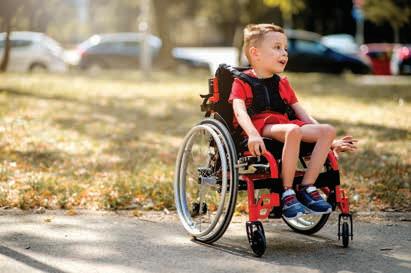

Noble (317) 375-2700
The ALTRUIST Group, LLC (317) 547-3041 x1005
Wabash Center (765) 423-5531
THERAPY & TESTING SERVICES
The Brain Center (317) 748-0034
VIDEOGRAPHY/PHOTOGRAPHY
Deliver Video
Eli Walker (765) 602-1046
VOLUNTEER OPPORTUNITIES
Buttermilk mountain (317) 987-8450
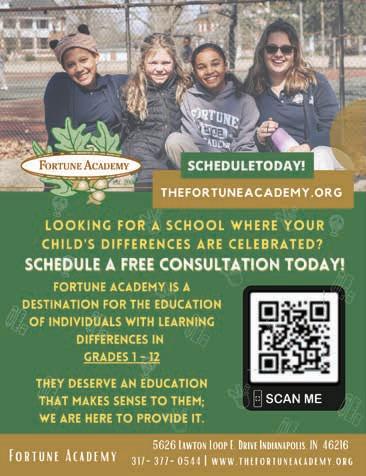






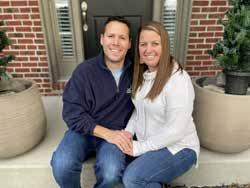



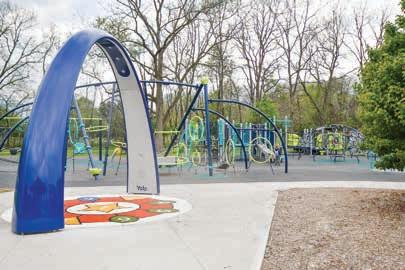
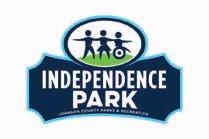


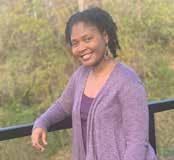










Have I got your attention with this clickbait title?
Good, because this is a question that everyone on the spectrum should consider. Granted, “curing” autism is not something that can be achieved right now. I see autism as a divergent operating system derived from atypical neurological development via genetic and environmental factors, and we don’t know nearly enough about those factors yet. But it is something that I have been thinking about [at least theoretically] lately.
While I have made more progress in spite of my autism than my parents may have ever thought possible and was fortunate to never really have to deal with the bullying that many others go through, I still have lots of issues related to this disorder. This is especially true when dealing with overwhelming sensory input and a lack of self-esteem.
Being high-functioning, I have always felt torn between having and/or wanting a stronger connection to neurotypicals (NTs) while also being envious of them for not having to deal with any combination of the following:
1. Being unable to truly understand the set of unspoken rules about “the way things are supposed to be.”
2. Not having to “mask” all of the time, which consists of the following (at least for me):
· Paying careful attention to facial expressions and body language of others in order to interpret their “intent” more correctly.
· Monitoring my own facial expressions and emotional tone, so I don’t offend someone else.
· Attempting to anticipate what people will say and/or do so that I can say and do the “right” things for each specific situation (so I won’t get “punished”).

By Matt Knight
· Controlling/disguising stimming behaviors or just attempting to use more acceptable ones (e.g., fiddling with pens/pencils, twirling keys, using squishy balls).
· Hiding or minimizing personal interests/thoughts (i.e., pretending to be a “yes man” and never saying what I really think at any given moment, etc.).
· Attempting (and usually failing) to push through bad/intense sensory discomfort (including, but not limited to, loud/sharp noises and bright lights).
3. Not having weird sensory issues in the first place (i.e., hating light touching, bright lights, loud noises, certain tastes/textures in food, etc.).
4. Having inconsistent sleep.
Like many other autistic people, I’ve always struggled with the cultural message that I’m supposed to “be myself” but also “one of the group,” so I don’t upset those who want everyone to behave the same way that they do. This lifelong conflict still makes me feel like I’m walking on a tightrope over a canyon, where just one wrong move will result in my life being essentially over/worthless, no matter what I do to rectify said mistake.
Even to this day, I don’t really fit in with anybody (even other autistic people, for that matter), nor do I really want to. I just get too tired after socializing for an hour or more. Listening to people talk about random stuff I couldn’t care any less about, in addition to thinking of acceptable responses and dealing with background noise (depending on the circumstances, of course), just becomes too much.
However, that isn’t to say that “curing” my autism would come without negative side effects. The lists below pretty much summarize the changes that would likely occur if I were to “cure” my autism:
Positives of “Curing” Autism:
1. I would socialize a lot more than I currently do.
2. I would hopefully be a much better judge of character than I currently am.
3. I wouldn’t have as many sensory difficulties.
4. I wouldn’t be overanalyzing my mistakes as much as I currently do.
5. Job interviews would be a lot easier as I wouldn’t be as worried about people seeing me as a fraud or a second-rate pretender.
6. I would be less dependent on my immediate family.
7. I probably would become more concerned about the well-being of others.
8. I would have a much easier time finding a job than I did.
Negatives of “Curing” Autism:
1. I would be more open to temptation/peer pressure with regard to recreational drugs.
2. I would be far more accepting of risks that people probably shouldn’t take (i.e., drinking, gambling, taking recreational drugs, etc.).
3. I probably would be less “honest” than I am now, even with all of the “masking” that I do to protect myself.
4. I probably wouldn’t do many of the leisure activities that I do now, such as reading, exercising, playing video games, and watching movies (or not to the same extent that I currently do).
5. I probably would be less intelligent/knowledgeable and/or hard-working than I currently am.
Sadly, despite everything that we have achieved and what we may yet achieve as a group, society will (probably) never really accept us for the brash and unconventional people that we typically are. Society is essentially a concept built upon uniformity around shared unspoken

Offering free or for-donation Biblical Counseling and Relationship Coaching for families within the Special Needs Community.
Coaching - Consulting - Collaborating
Follow us on Facebook for exciting updates @mark215
rules for interacting with others more than shared authentic individualism where we can be ourselves without fear of retribution. Autistic individuals, especially the high-functioning ones, are held to the same standards that neurotypical people are. But we simply cannot meet the standards that society would deem the most important because we don’t have the biological tools to effectively do so.
If push came to shove, I probably would cure my autism, but it would not be an easy decision. I do think that my life would be exponentially better without all of the anxiety related to the “masking” and sensory issues, but I also hate some societal rules and would probably rebel against them because of a different moral code based on a stricter interpretation of honesty. Without autism, I also wouldn’t have the anger from my inferiority complex driving me to prove to every neurotypical that I can at least be their equal, if not better than them. On the other hand, the thought of being treated with “kid gloves” is also insulting and disrespectful because that anger kills our self-esteem the more we give in to it.
While a conversation around whether or not we should “cure” autism is hypothetical, the conservations we have with ourselves and those around us about self-improvement, insecurity, and authenticity are not. At the very least, I hope that you, the reader, start to consider what it is you like and hate about yourself and why that is the case. Authenticity is not a goal that one can achieve in a matter of weeks or months. It is a never-ending process that constantly morphs alongside the experiences that change our perspectives, and maybe something you like about yourself now might be something you hate 3-5 years from now. If you would also “cure” your autism, that is a valid desire as long as you know deep down that you would benefit more in the long term. By the same token, not wanting to “cure” your autism is also a valid desire.
To this end, let me leave you with a multi-layered question: what do you desire, what are you willing to sacrifice in order to achieve it, and would that include “curing” autism?

The Indiana Education Scholarship Account (ESA) Program student applications will be available on June 27, 2022. In anticipation of the application launch date, Executive Director of Indiana ESA Jackie Guglielmo and Outreach and Engagement Coordinator Emma Vise sat down to compile frequently asked questions about student eligibility, application process, the differences between the Education Scholarship Account Program and the Choice Scholarship Program, and how families can use the scholarship funds to make education-related purchases.
Question: What is the Indiana Education Scholarship Account Program?
Jackie: This brand new, state-wide program will provide tax-free scholarship funds directly to Indiana’s students with disabilities who require Special Education. These funds are deposited into an Education Scholarship Account in 4 quarterly disbursements and may be used for education-related expenses. Families will be able to pursue the environment and services that best suit their student’s unique abilities and customize aspects of their child’s educational experience, including what type of educational setting meets their child’s learning needs and who will provide special education services. There is also a wide-ranging list of allowable purchases called “qualified expenses” for which families may use the funds to pay for, like services, therapies, and tutoring.
Question: Is this program only for students with disabilities?
Jackie: Yes. The Indiana ESA is available for Hoosier students with disabilities, between 5 and 22 years old, who meet an income requirement.
Question: What is the income requirement for the program?
Jackie: Annual family income cannot exceed 300% of the federal free and reduced lunch income requirement. For example, a family of four cannot make more than $154,012.50 per year. There is a graphic on our website that provides income information for up to a family of 10.
Question: Is the program only for private school students?
Jackie: Students may be coming from a variety of placements. They may have been educated at home, just coming of school

age, been enrolled in a public school or public charter school, or may already be in a non-public school. However, once the student accepts their ESA, they must disenroll from the public school or public charter school and pursue educational services elsewhere. It is also important to note that in order to use their ESA to pay for tuition and fees at their school of choice, the non-public school must apply and be approved to participate in the ESA program.
Question: Are there similarities between the Choice Scholarship Program and ESA?
Jackie: Yes. It is important to note here that a student may not use the Choice Scholarship and an ESA at the same time. The special education track of the Choice Scholarship Program and the ESA have similar eligibility requirements. Students who apply to either program would need to prove state residency, meet an income requirement of 300% of the free and reduced lunch income requirement, and fall between 5 and 22 years old. Eligible students have a disability, require special education, and have had an Individualized Education Program or Service Plan developed.
Question: How is the Choice Scholarship program different from the ESA?
Jackie: The application process is different. If a family wants to participate in the Choice Scholarship Program, they work with their chosen state-accredited, non-public school to apply and submit all required documentation to that school. Families who apply for an ESA will do so through our secure online portal and will upload documents directly for review by our team.
The Choice Scholarship Program has two application windows. At this time, the Education Scholarship Account Program has one application window that opens on June 27, 2022, and closes on August 5, 2022.
Families who are approved for an ESA may choose to send their student to a state-accredited, non-public school. However, this is not a requirement of the program. They may opt to provide education in other ways.
In August, any funds remaining in a student’s Education Scholarship Account, up to $1,000, may roll over to the following year without impacting that student’s grant award amount.
Question: If a student is already attending a stateaccredited, non-public school and using the Choice Scholarship Program, can they continue to attend the same school while using the ESA?
Jackie: Yes, as long as that school has applied and been approved through the Education Scholarship Account Program. Just because a school accepts the voucher program doesn’t necessarily mean they accept the ESA. Families should be sure to ask that question to the nonpublic school when they are thinking of applying for the Education Scholarship Account Program.
Question: Can the student use the ESA while attending a non-public school that is not state-accredited?
Jackie: Families have flexibility with the Education Scholarship Program. They may choose to use the ESA funds at a state-accredited, non-public school. They may also choose a non-public school that is not state accredited. However, the payment process is different between the two.
If a family chooses for their student to attend a nonpublic school that is not state-accredited, the school will need to invoice the family following the provision of educational services. The tuition and fee payment will be made in arrears, similar to the payment method for all other types of participating entities.
If a family chooses for their student to attend a state-accredited non-public school, our team will verify enrollment. The non-public school will invoice the family for the upcoming quarter, and the family will upload the invoice for payment to be made ahead of services, similar to how tuition payments are typically made.
There is no requirement that a student using an ESA attend a non-public school. There is also no requirement for a student attending a non-public school participating in ESA to use their ESA funds to pay that school’s tuition and fees. They could apply for a waiver, which means they would use their ESA funds for other qualified expenses and agree to be responsible for paying the tuition and fees through another payment method.
Question: What other types of qualified expenses can a parent purchase with the ESA funds?
Jackie: Qualified expenses are services and therapies offered by an approved provider related to the education of an eligible student. Some examples are tuition and fees, fees for assessments or examinations, educational services, therapies, courses, programs, fee-for-service transportation,
and so many others. All payments for expenses will be made in arrears, meaning after the service has been completed.
Question: How do payments work? Can families be reimbursed for expenses paid out of pocket?
Jackie: Families will upload invoices from approved providers into our secure, online portal to initiate the payment process. All payments are made for services rendered and may not be paid for ahead of time. Reimbursements will not be issued for any payments made.
Question: What if an account runs out of funds prior to the next quarterly disbursement and there is an outstanding balance owed to a provider?
Jackie: It will be the family’s responsibility to make sure any balances are paid for services rendered. The same would apply if the cost of tuition and fees exceeds the grant award amount.
Question: Can parents still use their insurance for certain services?
Jackie: Yes! In fact, we encourage families to utilize their insurance first and then use their ESA to cover any remaining balances.
Question: Will students currently accepting Medicaid waiver still qualify for Indiana ESA?
Jackie: Yes. We understand that there may be some overlap in services covered by Medicaid waivers and qualified expenses under Indiana ESA. We encourage families to maximize use of both programs by contacting their Medicaid waiver case manager to review the parameters of their waiver or Emma Vise to review qualified expenses of the ESA programs.
Question: When and how can families apply?
Jackie: Student applications will open on June 27, 2022, and will close on August 5, 2022. Families will need to visit the application page of our website in order to begin the application. Applications can be completed on a laptop, desktop, smartphone, or tablet.
Thank you to all of the families and providers who have sent these great questions. If you have any additional questions or would like support during the application process, we encourage you to reach out to Emma Vise at EmVise@tos.in.gov.
For more information on the Indiana Education Scholarship Account Program, visit our website at www.in.gov/tos/inesa, where you can explore ESA information in any language, and sign up for our free monthly newsletter.








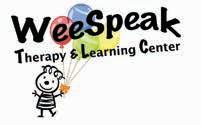
~Maria S. (parent)


• Creating your financial road map and providing guidance through life’s transitions
• Celebrating 35 years of serving clients at Charter Advisory Corporation
• One of only 29 recipients to have been named an Indianapolis-area Five Star Wealth Manager award winner each year since 2012
Working towards the realization of your dreams is paramount in our relationship with you. The process of understanding your current financial situation is vital in making prudent decisions towards your future goals. We will walk with you, with experienced guidance, toward your financial destination.

250 E 96th Street, Suite 200 • Indianapolis, IN 46240 • Phone: 317-844-7416 dyearwood@charteradvisory.com • www.charteradvisory.com


Elizabeth A. Homes is a special needs planning and elder law attorney. She has been licensed and practicing law since May of 2014. Her practice at the Law O ce of Elizabeth A. Homes LLC is focused on Special Needs Planning, Guardianships, Elder Law, Estate Planning, and Probate Work. This includes Wills, Powers of Attorney, Advanced Directives, Trusts, Trust Administration, Medicaid Planning, Special Needs Planning, Guardianship, and Probate. She is admitted to practice law in the State of Indiana.
We ask "What If?" so you don't have to ask "What Now?"



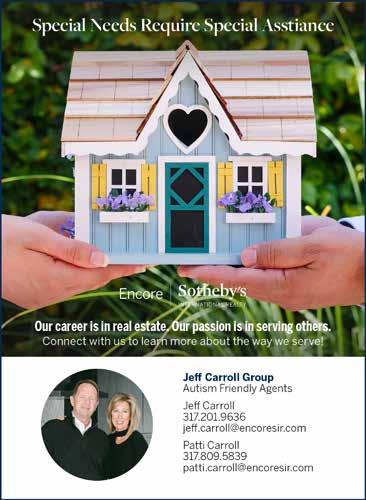

By Angela Arlington
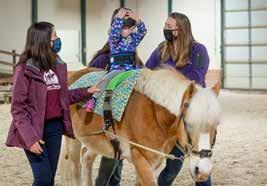
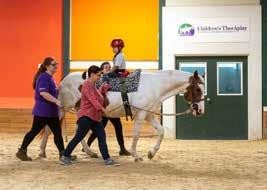
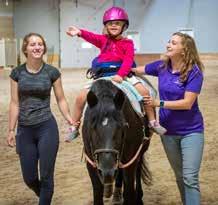
The mission of The Children’s TherAplay Foundation is to provide children with disabilities a foundation for developing life skills through innovative therapies, including physical, occupational, and speech therapies using a horse as a treatment tool, in a safe and caring environment.
At The Children’s TherAplay Foundation, Inc., children with disabilities receive physical, occupational, and speech therapy using the movement of a horse as a tool to accelerate physical, emotional, and behavioral development, a practice known as hippotherapy. “For over 20 years, TherAplay has been treating kids 18 months to 13 years with a variety of diagnoses and developmental delays, and we have grown to become the largest facility specializing in hippotherapy in the country,” Communications Manager Emily Sigler explains.
“Our licensed PTs, OTs, and SLP combine a sensoryrich, child-centered clinic with hippotherapy to yield transformational results for children facing life with a disability,” Sigler explained. The therapeutic inputs the horse provides for children allow them to reach their developmental goals for independence. Physical therapy goals center around gross motor skills and can include crawling, sitting independently, walking, jumping, riding a bike, and perfecting balance and coordination. Occupational therapy goals center around fine motor skills and can include many activities of daily life, including self-dressing, self-feeding, writing, cutting with scissors, emotional and sensory regulation, and behavioral strategies. Speech therapy goals center around language and communication skills and can include using a communication device, practicing sounds and words, and communicating with adults and peers.
Sigler shares, “Play is the work of a child. The combination of hippotherapy and our sensory-rich clinical therapy allows our pediatric clients to work hard while they play. Children with disabilities often spend countless hours in and out of doctor’s offices. Coming to Children’s TherAplay feels like fun because of our relaxed barn feel and sensory-rich facility. At Children’s TherAplay, kiddos have experienced many ‘firsts’: first steps, first words, first time tying shoes, first time buttoning a coat, and so much more. These ‘firsts’ give our clients and their families confidence and hope for an independent future.”
Children’s TherAplay ‘funds the gap’ between what a therapy session costs and what insurance will reimburse. Approximately 52% of their operations are funded through donations, and there are a variety of ways to support them. Individual giving, corporate sponsorships, funding a horse, becoming a monthly donor, making a planned gift, or purchasing an item off their wish lists are all ways you can make an impact and help them continue to provide this programming to kiddos with special needs.
They also offer parent programming, special events adapted for the special needs community, and connections to community partners to best meet the needs of every family. Children’s TherAplay uses 8-10 volunteer sidewalkers every day who assist during a hippotherapy session. “We also use volunteers for special events, corporate group projects, and clinic work,” said Sigler.
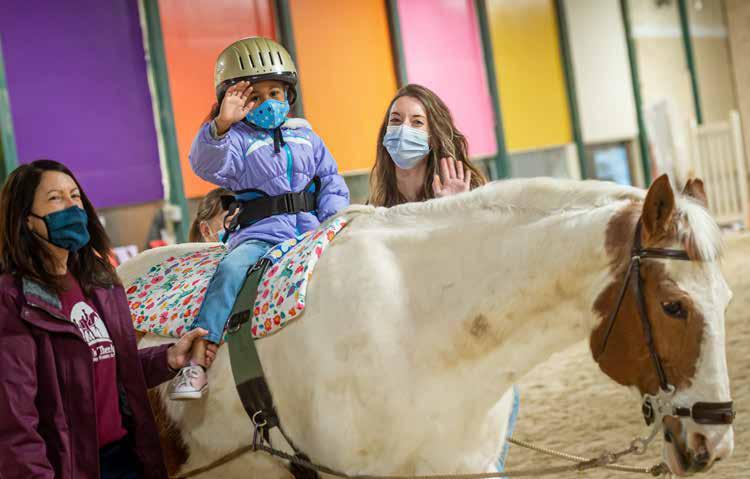
TESTIMONIALS:
“Coming to TherAplay doesn’t really feel like therapy at all, but hippotherapy has made Caroline stronger in ways that no other therapy has been able to do. It’s given her so much more independence in her daily life.”
- Caroline’s mom, Lauren.
“When we walked through the Children’s TherAplay doors eleven years ago with our first daughter, Emmalyn, I knew something was different about TherAplay joy. Her sister Elizabeth is also finding that joy, smiling and laughing as she does therapy. Our family is forever grateful for the therapists, the other families, the horses, and the beautiful facilities at TherAplay. Your donations have helped two of my daughters find their joy, their strength, and their confidence to achieve the hard things. Thank you!”
-Elizabeth and Emmalyn’s mom, Karen.
“Tuesdays are our Jude man’s favorite day of the week because he gets to go to ‘horse neigh neigh!’ but it is my favorite day of the week because I know he is getting world-class therapy that is helping him to become the absolute best he can be. We are forever indebted to you all for that and will continue to do anything we can to support this life-changing facility!”
-Jude’s mom, Margo.





Looking to give back and make a difference in the community?
Special Needs Living and The Donaide Foundation are partnering to help support and promote local nonprofits. By donating to our Impact Campaign, you will help support local nonprofits that serve the special needs community.
Many parents and individuals with special needs have difficulty finding the resources that exist in the community. Some feel alone and isolated as they navigate through the challenges. We started Special Needs Living to inspire, educate and connect local families and help them find the great resources that will allow them to live their best lives.
We are currently raising funds to help Indiana-based nonprofits get their message out through Special Needs Living so that they can support more local families.
Your donation will go directly to Indiana-based nonprofit organizations that support the special needs community and cover the cost of their ad space in Special Needs Living. This space each month will...
1. Help bring more awareness about their organization to members of the community
So many nonprofits that support the special needs community have found it very challenging to let the public know they exist. If only families knew about the programs available, it would have a tremendous impact on their lives. However, the limited funds these organizations have are prioritized for services, leaving little for marketing and awareness. Because Special Needs Living reaches thousands of families and individuals each month, the impact of their advertising is amplified, allowing these organizations to reach many more people with their message.
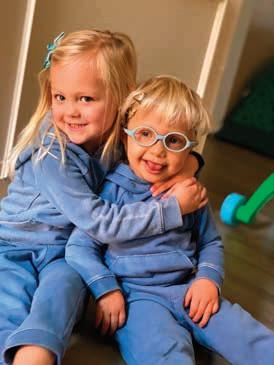
2. Help raise even more funds for local nonprofits
Through their monthly ad space, organizations can efficiently communicate their fundraising needs so that donors who feel a connection to a particular organization can support it directly.
3. Help them find local volunteers to better carry out their mission
The space can be used to recruit volunteers, allowing interested individuals to give their time and talent to the organization that resonates best with them.
4. Educate the community
Organizations can use their space to share resources and educational information that will better empower and impact local special needs families.
5. Connect these organizations with the special needs community, businesses, and each other so that relationships are built, synergies are realized, and more families are served. Thank you for coming alongside our mission to strengthen nonprofits, which in turn will better support families and individuals with special needs!
Learn more here and make your donation today: https://app.donaide.com/ donaidefoundation/impact
If you are a nonprofit that supports the special needs community and would like to receive funds from this campaign to market your services and better reach your audience, please contact Jamie McCabe at specialneedslivingindy@n2pub.com.
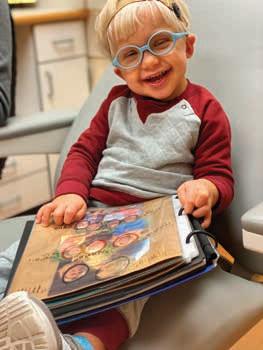


Noble has been expanding opportunities and enhancing the quality of life for people with disabilities since 1953. At
goal is to meet the needs of the children and adults so they can “Dream It. Live It.” every day. •

Come
iBeach31 17341 Westfield Park Rd. Westfield, IN 46074
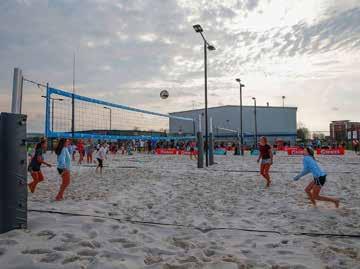
Volleyball Games
Cornhole
Frisbee beach toys
Music
Bar on site
To








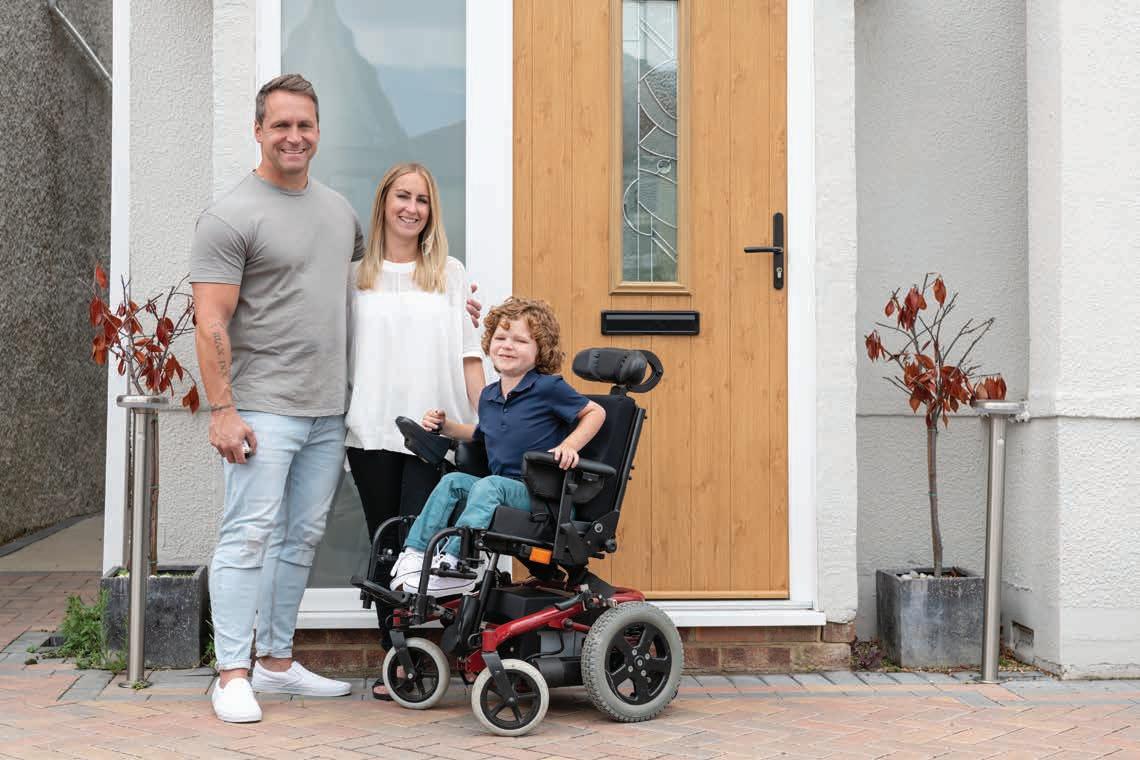

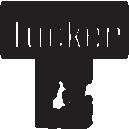




By Christia Woodford
Important Note: Prior to attending any events, please be mindful of any COVID-19 restrictions. Please review the state mask executive order. There are exemptions within the order, including that children under 2 years of age should not wear a face-covering due to risk of suffocation, and any person with a medical condition, mental health condition, or disability that precludes wearing a face covering is not required to do so. Since COVID-19 is still among us, there is a possibility that the events listed and places to go could be canceled, rescheduled, or closed. Please confirm event status and listed details in case event details have changed since posting.
Note: Don’t forget to apply for the Access Pass! The Access Pass Program allows families that meet the specific requirements

listed below to visit The Children’s Museum of Indianapolis and all participating locations for $2 per family member per visit for up to two adults and all dependent youths living in the household. Qualifications include the following:
· Hoosier Healthwise Insurance (Indiana’s health care program for low-income families, pregnant women, and children)
· SNAP (Supplemental Nutrition Assistance Program)
· TANF (Temporary Assistance for Needy Families)
Apply here: https://www.childrensmuseum.org/visit/ hours/access-pass
The Children’s Museum of Indianapolis
Various Events
July 1-July 31
Opens at 10 a.m.
3000 North Meridian Street Indianapolis, IN 46208
317-334-4000
https://www.childrensmuseum.org/visit/ calendar?date=01/08/2022
Conner Prairie-Indiana’s Living History Museum
Come celebrate July 4 with the citizens of Prairietown!
July 2nd-4th, 2022
13400 Allisonville Road, Fishers, IN 46038
Phone: 317-776-6000 or 800-966-1836
Independence and freedom are contested ideas. Join the citizens of Prairietown as they celebrate 60 years of American independence, but also hear how others have questioned just how free America is. Various events through July. In 2022 the second Sunday of every month from 10 a.m.-12 p.m. will be sensory-friendly hours. Admission is free, and all of the grounds will be open.
Indiana Fever
July 5, 7, 13, 15
Gainbridge Fieldhouse, Indianapolis, Indiana
Indiana Farmers Coliseum https://www.wnba.com/schedule/
Indy Eleven
July 2, 9, 23, 30
Carroll Stadium, Indianapolis, Indiana https://www.ticketmaster.com/indy-eleven-vsnew-york-red-indianapolis-indiana-05-21-2022/ event/05005C3FBFB5483D
Indianapolis Indians
July 4, 6, 7, 8, 9, 10, 22, 23, 24
Victory Field, Indianapolis, Indiana https://tickets-center.com/search/ Indianapolis-Indians-tickets/
FAMILY FUN
Indianapolis Zoo
Animals & All That Jazz
5:30 - 8:30 p.m.
JUNE 16 - AUG. 4
FREE FOR ZOO MEMBERS. INCLUDED WITH REGULAR ZOO ADMISSION. THURSDAY NIGHT CONCERT SERIES
1200 West Washington St. Indianapolis, IN 46222
317-630-2001
Hours: 9 a.m.-4 p.m. MON-THURS, 9 a.m.-5 p.m. Fri.-Sun.
Various daily events scheduled every day. Check calendar for events https:// www.indianapoliszoo.com/visit/ daily-schedule/.
The Studio Movie Grill
3535 West 86th St. Indianapolis, IN 46268
317-315-8113
Sensory-friendly screenings of movies! Check the website for movies and times. https://www.studiomoviegrill.com/ movie/special-needs-screenings
Kids’ Summer Movie Series
June 8, 2022 - July 27, 2022
10 a.m.
Mooresville Showtime Cinema
300 Southbridge St., Mooresville, IN 46158
Join the Mooresville Showtime Cinema for the 2022 Kids’ Summer Movie Series. Escape the summer heat with fun, affordable indoor movies this summer in June and July! These carefully chosen kid-friendly films will be shown every Wednesday between June 8 and July 27. Doors open at 9:30 a.m., movie begins at 10 a.m. https:// www.visitmorgancountyin.com/event/ kids-summer-movie-series/9089/
Wild Play Wednesdays
Second and fourth Wednesday through the summer
2 p.m.-4 p.m.
W.S. Gibbs Memorial Park 4521 Gibbs Rd., Danville, IN
Join the naturalists at the W.S. Gibbs Memorial Park playground for engaging nature play on the second and fourth Wednesdays of each month this
summer from 2 to 4 p.m.! Each session will bring something new and different, so don’t miss out! Discover new ways of playing outside!
Sensory Friendly Nights at The Waterpark
Adaptive Open Swim
July 12, 26 and August 2 7:30-9:30
Monon Community Center Waterpark The Waterpark can be overwhelming and overstimulating so we have a solution for you. Join us for a fun evening at The Waterpark free of distraction, designed for individuals with disabilities. The music will be off, the concession stand will be closed and your family can focus on enjoying The Waterpark. The main activity pool, slides and lazy river will be open for families to swim, play and interact with others. The cost is $17 per family. Pre-registration is required. You only need to register one member per family. *Program designed for individuals with disabilities and their families. https://anc.apm.activecommunities. com/carmelclayparks/activity/ search?onlineSiteId=0&activity_select_ param=2&activity_keyword=open%20 swim&viewMode=list
THE ARTS
Beef and Boards
Mary Poppins
May 19 - July 10
The Honky Tonk Angels
July 14 - August 14
9301 Michigan Road Indianapolis, IN 46268
317-872-9664
https://www.beefandboards.com/Online/ default.asp
Jubilate Choir
Butler University, Lilly Hall, Room 133 Wednesdays, 6:45 - 7:30 p.m.
Director: Lauren Southard
Start Date: September 22, 2021
For more information, contact Lauren Southard at 317-940-8065 or lsouthar@icchoir.org
Gigi’s Playhouse
Various classes during the week 5909 East 86th St. Indianapolis, IN 46250 317-288-8235 indy@gigisplayhouse.org
EVENTS
Indiana State Fair
July 31st is Abilities Awareness Day at the State Fair.
July 29 - August 21, 2022
1202 E. 38TH ST. INDIANAPOLIS, IN 46205
We are thrilled to welcome our beloved fairgoers back to the Great Indiana State Fair this summer.
https://www.indianastatefair. com/p/state-fair
Kroger Symphony on the PrairieStar-Spangled Symphony
July 1 to 4, 2022
Conner Prairie 13400 Allisonville Rd., Fishers, IN 46038
Pack your picnic and wear your red, white, and blue for the Indianapolis Symphony Orchestra’s annual celebration of America. The ISO will salute all branches of the U.S. Armed Forces each night. Our summertime tradition features guest vocalist Doug LaBrecque and music by John Phillip Sousa, John Williams, Irving Berlin, and more!
Zionsville Lions Annual Fourth of July Celebration
Mon, Jul 4, 5 p.m. EDT
Zionsville Lions Club Park 11053 Sycamore St., Zionsville, IN
Join us for an All-American Independence Day Celebration in Lions Park on Monday, July 4. This is the second-largest fundraiser for Lions Park. Music, bounce houses, kids’ games, and lots of great festival food. Parking lot opens at 4 p.m. Food and Entertainment begin at 5 p.m. No admission fee, but $5 per car for parking. Fireworks will begin at dusk.


Functional me dicine is ideal for helping indiv iduals with ASD as the b o dy is v iewe d as one integrate d system rather than a c olle ction of indep endent organs. By understanding and treating the b o dy as a whole, functional me dicine can help various ranges of abnormalities such as gut imbalanc es and detoxification issues c ommon in indiv iduals with autism. Such abnormalities often caus e the b ehav ioral and mo o d symptoms of autism.

There is no reas on you or your family should endure any additional stress. We understand autism c omes with enough c omplications and trying times, and now s ettling for me dio crity do es not have to b e your future.




By Paul Hathcoat
Psalm 23 is such an inspirational chapter of the Bible. Traditionally it serves pastors well when performing a funeral or offering respite when someone is struggling. What I have found though, is that Psalm 23 can breathe life into every difficult day and can deliver a refreshed spirit to those who have little to no margin to recover in their lives. If that sounds like you out there, then come with me as we take a look at Psalm 23 from a pastor’s perspective.
Psalm 23: “The Lord is my shepherd; I have all that I need. 2 He lets me rest in green meadows; he leads me beside peaceful streams. 3 He renews my strength. He guides me along right paths, bringing honor to his name. 4 Even when I walk through the darkest valley,[a] I will not be afraid, for you are close beside me. Your rod and your staff protect and comfort me. 5 You prepare a feast for me in the presence of my enemies. You honor me by anointing my head with oil. My cup overflows with blessings. 6 Surely your goodness and unfailing love will pursue me all the days of my life, and I will live in the house of the Lord forever.” NLT
“The Lord is my Shepherd; I have all that I need.” God is good to us. He provides what we need to know Him and to know His son. Anything else can be considered secondary in life.
“He lets me rest in green meadows; he leads me beside peaceful streams.” We do not have to be afraid. The Lord will battle for us and will go ahead of us to make our struggles mean something and make our time account for His good.
“He renews my strength. He guides me along right paths, bringing honor to his name.” God calls each of us to a journey through life. The good news is, He walks with us and holds us up when things are too heavy and shows us which next step to take.
“Even when I walk through the darkest valley, I will not be afraid, for you are close beside me. Your rod and your staff protect and comfort me.” His protection cannot keep our loved ones and ourselves safe from everything in this world. But He can show us how to be brave and trust in Him. He does bring comfort into our current lives by preparing a plan for our next one in heaven. We need only join Him in that plan by refocusing daily on His will.
“You prepare a feast for me in the presence of my enemies. You honor me by anointing my head with oil. My cup overflows with blessings.” Nothing on earth can truly prosper over us. Can we humble ourselves and get rid of earthly desires so that God can be the blessing that we look to alone?
“Surely your goodness and unfailing love will pursue me all the days of my life, and I will live in the house of the Lord forever.” Knowing our Lord, means looking forward to being with Him. It means trusting that He has a room waiting for each of us, and our loved ones, in His house.
Many of you readers out there are struggling in one way or another through life. I have no shortage of things to lament about and worry over myself. But can we take our focus off our earthly circumstances long enough to get a clear picture of what God is trying to tell us here in Psalm 23? We are the sheep, and God is the loving shepherd. He will lead us onto the right path. Helping us to find water and food, keeping us safe from the dangers we cannot even see ourselves. Without trusting and following Him, we will starve to death spiritually as we elect to stay behind and roam in an empty pasture that has already been picked over. Without our shepherd, we are as helpless as sheep. Give in today and decide to follow our shepherd. God bless you all!
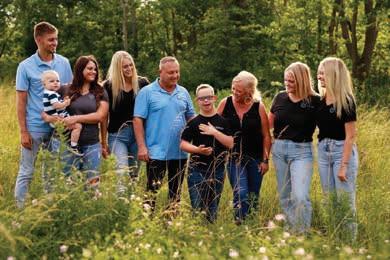


By Gordon Homes, CFP


Caregivers of dependents with special needs who receive Social Security Disability Income (SSDI) benefits must fully understand the nature, scope, and duration of these benefits to effectively plan for the financial future of their dependent. When SSDI benefits are payable based on a parent’s working record to their adult dependent with special needs, the Social Security Administration (SSA) considers this type of benefit as a “child’s” benefit. It is this form of eligibility that this article will address.
Many caregivers do not understand how this type of SSDI benefit works and make incorrect planning assumptions — which could be disastrous for their dependent. Often caregivers assume that the benefits will last forever, when in fact, they could be reduced and even be stopped by the SSA. Plans put in place by caregivers could be derailed, shortcircuited, and fall short of expectations. Without a clear understanding of SSA benefits and payments, caregivers may not be able to effectively plan for the financial future of their dependent with special needs.
An adult dependent may be eligible to receive SSDI payments from their parent’s working record based on their own disability or blindness if certain requirements are met. The parent must have contributed to the Social Security system a minimum number of qualifying quarters, and some of those taxes must have been paid in recent years. Even then, the dependent is only eligible to receive SSDI payments if their parent is receiving Social Security disability or retirement benefits or is deceased.
Next, the dependent must be over the age of 18. Their disability must have occurred before the age of 22 – which, coincidentally, is the age that a disability must have manifested itself by to be considered a “developmental disability” by the federal government’s standards. The dependent cannot be performing any “substantial work” (per definition of the SSA) and must have a medical condition that has lasted or is expected either to last for at least 12 months or to result in death. Typically, they must also be single or married to another Social Security beneficiary. SSDI benefits can also be payable to adults who received dependent benefits based on their parents’ Social Security earnings record prior to the age of 18.
After receiving 24 months of SSDI payments, the recipient will become eligible to receive Medicare Part A hospital insurance benefits, which are premiumfree. They will also be eligible to purchase Part B supplementary medical insurance and Part D voluntary prescription drug benefits at that time.
SSDI benefit payments made to the dependent are based upon the average monthly indexed earnings of the wage-earning caregiver and reflect that caregiver’s actual contributions to the system. Since a limited amount of contributions were made into the system, the SSA calculates the family maximum that can be paid out to the family as a whole.
For example, if the dependent is eligible for SSDI benefits based on their caregiver’s disability, the family’s maximum monthly benefit can be no more than 150% of the caregiver’s primary insurance amount (PIA.) The former wage-earning caregiver receives his own full benefit, and any eligible dependents must divide the balance between them, though not necessarily evenly. Payments to eligible dependents are reapportioned when other dependents are added or removed, which can create problems for your loved one. This reapportionment could occur when the caregiver’s spouse reaches retirement age, and they draw on the system, or the caregiver leaves behind a widow(er) who is also eligible to receive their benefits.
Therefore, as mentioned earlier, SSDI payments to the dependent with special needs can be decreased, modified, and even stopped. If the SSA determines the parent’s disability has ended and they are not of Social Security retirement age, the dependent’s SSDI benefit will terminate as well if being paid as a result of their dependent status. This could leave your loved one with inadequate funds and potential loss of accompanying Medicare coverage.
Caregivers must contact the Social Security Administration and determine if there will ever be a benefit reduction or elimination at any point in their dependent’s future. Additional special needs planning can then be undertaken to offset the effects of these potential losses.
Due to the complexity of federal and state laws, you may need to seek advice from your own legal counsel and also work with a specially trained professional who can help you plan for the future of your dependent with special needs.
Call Special Care Planner Gordon Homes, CFP at (317) 567-2005 for a complimentary consultation.
For information about SSDI, go to http://www.ssa.gov/pgm/links_ disability.htm. Information is available by telephone, mail, or in person at an office. The toll-free number is 1–800–772–1213.
SpecialCare is a program created by MassMutual that provides access to information, specialists, and financial solutions to people with disabilities and their families. For more information about Massachusetts Mutual Life Insurance Company (MassMutual) and its SpecialCare program, please visit www. massmutual.com/specialcare.
The Special Care Planner title is used by MassMutual financial professionals who have received advanced training and information in estate and tax planning concepts, special needs trusts, government programs, and the emotional dynamics of working with people with disabilities and other special needs and their families.
Provided by Gordon Homes, CFP, courtesy of Massachusetts Mutual Life Insurance Company (MassMutual)
The information provided is not written or intended as specific tax or legal advice. MassMutual, its employees, and representatives are not authorized to give tax or legal advice. Individuals are encouraged to seek advice from their own tax or legal counsel. Individuals involved in the estate planning process should work with an estate planning team, including their own personal legal or tax counsel.
© 2022 Massachusetts Mutual Life Insurance Company (MassMutual®), Springfield, MA 01111-0001. All rights reserved. www.MassMutual.com. SC1165 222 MM202502-300546
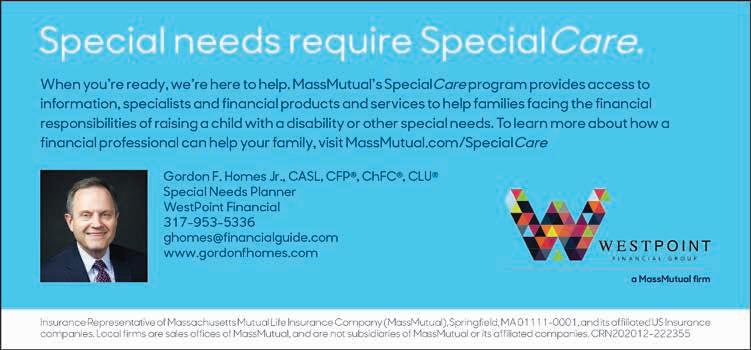

By Angie Arlington
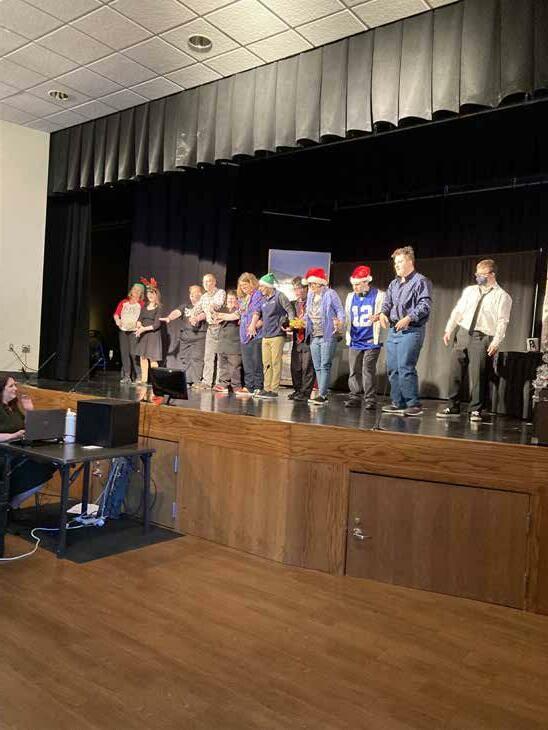
In March of 2022, Carmel Clay Parks and Recreation (CCPR) held its annual Barrier-Free Theatre performance in honor of Developmental Disability Awareness Month.
Barrier-free theatre is a form of drama therapy in which participants with and without disabilities work together to write and act in their own production. It empowers participants, increases self-confidence, and improves self-awareness. It also creates a positive, inclusive and creative environment.
Sally Bailey, a professor in the School of Music, Theatre and Dance at Kansas State University in
Manhattan, Kansas, and director of the Barrier-Free Theatre company, a partnership between the City of Manhattan Parks and Recreation program and the Kansas State University Theatre program, founded the program 30 years ago in Washington, D.C.
“That’s where I learned it, and Michelle Yadon, our predecessor here at CCPR, learned from Sally as well,” said Sara Fenster, the current director of the CCPR Barrier-Free Theatre.
Four seasons have come and gone since Yadon brought the program to CCPR’s Monon Community Center. This year, there were 10 actors. “We’ve had years with a
few more and a few less,” Fenster noted. “We’re always looking to grow and accept new people into the process.”
The annual call-out rehearsal for all adults happens in August, when interested individuals come to see if the process and the group are right for them to commit to.
“The entire creative process takes around eight months to complete,” Fenster said. “Then, we begin brainstorming and improvising different characters and scenarios, conflicts, all kinds of elements of our story, and then we kind of narrow it down and come to a consensus about what our show is going to be about. It’s largely improv kind of character work and workshops. We do interviews with our characters. After all the improv, we write the show.”
Rehearsals for this year’s show started in January, with every week bringing in more and more sets and props and costume pieces. “We rehearsed an hour and a half each week,” said Fenster. “During tech week, which was the final week leading up to the shows, we incorporated the technical elements of lights, sound, and costume, and rehearsed every day.”

2022’s show was titled World Gone Rocked. “It was a very pandemic informed play,” Fenster said. “When we were brainstorming all of our topics, everything that we brought up was impacted somewhere in the last couple of years by the state of the world. So, we had all of these different conflicts in the play — the personal problems of struggling with career changes, with loss, being away from loved ones. All of these things are heightened and impacted by a pandemic.”
“Although ours was not a medical pandemic, it was [about] a group of musicians who had fallen under the trance of a phantom,” Fenster explained. “We had a great time with it. We had some people who felt very strongly about playing the antagonists this year. So we had this whole musical group and then the Phantom to have a taste of what it’s like to be the bad guy. This is a safe place to explore that side of yourself without doing any damage to anyone or anything.”
“2019 was my very first year with [Barrier-Free Theatre],” said actress Lily Thompson. “I played a grandma. Last year I played a good dragon, and this year I played the bad guy, Phantom Wolfgang Peter White. I loved the name Wolfgang from composer Mozart. Peter is the first name of the classical composer Tchaikovsky. And ‘White’ is from Snow White, my favorite Disney princess.”
“I was Jasmine,” actress Kelly Kaser shared enthusiastically. “She is my favorite princess. It’s my birthday in the play. I like being an actor.”
Interested adults should look for call-outs to be held in August of this year for 2023’s production.
You can also contact CCPR Inclusion Supervisor Kelvin Solares for more information at ksolares@carmelclayparks.com.



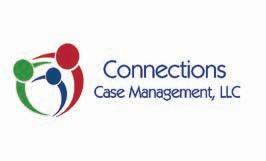

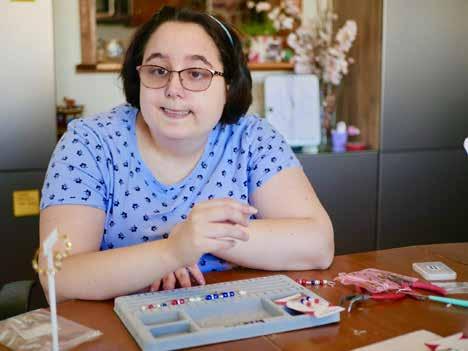

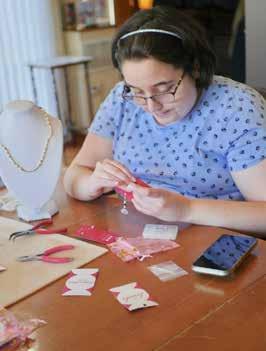

Jessica Reed is a young woman on the autism spectrum who learned to do beading during her Project Search internship after graduating from Lawrence Central High School in 2015. The Project Search team received a Creative Classroom grant from Lawrence Township Education Foundation to make meditation beads for Community Hospital North. Jess was having difficulty being independent in the various hospital rotations, so her Project Search Team had her work on the meditation beads project. She enjoyed it and seemed to have a natural ability to work with beads.
During the internship, over 180 sets of meditation beads were given to patients at Community Hospital North Cancer Center. The project was then expanded, and beads were given to all Lawrence Township bus drivers and transportation staff following the tragic death of Amy Beverland Elementary School principal Susan Jordan.
In 2016, at the end of the internship, Jess and her instructor created her own Etsy shop, Designer Beads by Jess, as a way for her to continue what she had learned. Jess has continued making bracelets at home and has added lots of new items to her collection, such as earrings, necklaces, rosary beads, key chains, bookmarks, and lanyards. She is very proud of her work and appreciates all of the support that has been shown to her.
Jess attends 4-5 craft fairs in the fall and 4-5 events other months throughout the year, but most of her sales are through her Etsy shop.
When Jess is not making jewelry, she attends Same As U two days a week. She enjoys going to the movies, bowling, going out to eat, working on puzzles, and playing video games. She is a member of the Lawrence Aktion Club, where she participates in volunteer activities.
You can follow Designer Beads by Jess on her social media accounts and get a glimpse of her working on her new designs and customer favorites. Jess especially enjoys making earrings for the various holidays so her customers can show off her designs in a spirited fashion! Her collection also includes jewelry with various themes: health and disability awareness and sports teams from local high schools, colleges, and the NFL.
Designer Beads by Jess provides Jess with a meaningful activity to work on and a good alternative to a traditional job setting. She enjoys fulfilling orders from her Etsy store and meeting her customers at various craft shows and disability information fairs.

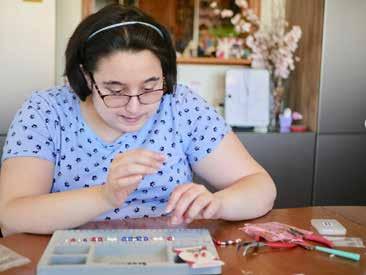

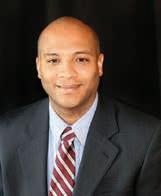
Designer Beads by Jess

You can find Designer Beads by Jess and purchase her beautiful creations at the below sites: Etsy: www.etsy.com/shop/designerbeadsbyjess Follow @DesignerBeadsByJess on Facebook and Instagram

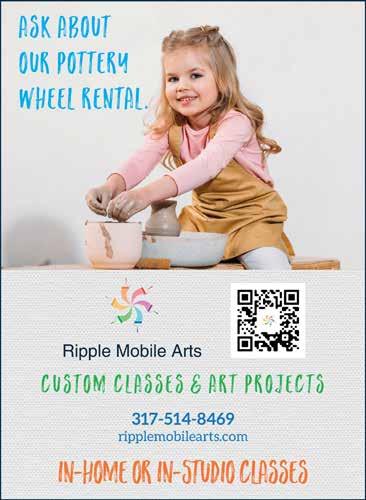

By Edith Glover
Forty-seven years ago, the birth of my son Lyle simultaneously ushered us both into a new life and reality. For him, a world yet to be learned, and for me, a world I incorrectly thought I knew. Three years later, both of our worlds would be transformed and reshaped by his diagnosis of autism.
May 28, in the delivery room, I was tired but excited to finally meet the active little stranger, the mysterious “in utero” being that rhythmically stroked against my rib cage nightly with distinctivelyfelt tiny fingers. My obstetrician disputed my detailed descriptions and attributed my experience to a mother’s “vivid imagination.” Nonetheless, I remained steadfast in my belief, and the first moment Lyle was placed in my arms, he wriggled into position, placed his hand against my rib cage, and began that familiar sequence of strokes. A mother knows!
A diagnosis eventually came after three years of vague “he falls through the cracks” observations offered by various specialists that examined him. He was a very energetic, loving child but speech development seemed delayed. He enjoyed family gatherings and was very social, yet seemed uninterested in most toys.
I had first suspected autism at seven months when Lyle found a piece of yarn that was lying on the floor and repeatedly began to twirl it in a very preoccupied manner. I had previously observed this same behavior as a nursing student from a child with autism that was being mainstreamed into the daycare center’s training site. Lyle’s pediatrician wasn’t concerned and dismissed my fears when I
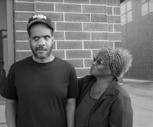
discussed the incident with him as me being “overly concerned.” Again, a mother knows!
With the support of my mother, Lyle’s beloved “Granny,” we survived numerous distressed teacher calls and attended numerous meetings regarding Lyle’s behavioral issues at school. As a six-foot-tall black male, he was viewed as intimidating and often sent back home, although we had few issues with Lyle at home. He was cooperative, happy, and entertaining. His teachers didn’t or wouldn’t believe me when I would describe to them his demeanor in the home environment. The school, still operating with the institutional mentality that prevailed at the time, saw group homes as the only community living option for individuals like my son and, on one occasion, even suggested a school program at Central State Mental Hospital as a placement for him. It didn’t occur to them that I never attended any of our numerous meetings in a full-body cast, bleeding and bandaged, or considered the fact that Lyle lived safely with a menopausal mother and a 65-year-old grandmother every day before coming to school! They never entertained the idea that possibly the noisy school environment and inadequate programming could be the cause of his behavior. Eventually, his teachers found Lyle’s father, who was not in his life beyond court-ordered support payments, and together they successfully orchestrated a mandated group home placement for Lyle despite my vigorous and expensive legal opposition. It was a judgment from probate court to place Lyle in a group home because “I loved him too much to let him grow.” Such placement was painted by his father’s lawyer to be the “same as going away to a college dorm,” and with a pointed finger, I
was threatened with contempt charges if I interfered.
Abruptly, after this decision was made, this same probate court, which normally didn’t handle such matters anyway, officially announced it would no longer handle cases such as ours.
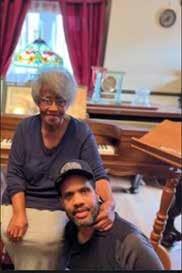
Our hearts and our family were shattered. I was forced to stand by as Lyle’s estranged father, now his court-appointed guardian, sanctioned the administration of chemical castrating hormones and large doses of psychotropic and sedating medication that ultimately led to a seizure in order to make him less resistant to his unpleasant “dorm room” surroundings. At one point, Lyle escaped from the transport van into dangerously moving traffic, trying to get back home before the staff caught up with him.
Finally, Lyle was returned to us — damaged, confused, and angry, 2 ½ years later. Again a support system failed us.
I took family leave from my position as an occupational health nurse to not only care for him but for my mother also, now partially incapacitated by a stroke. Unable to find reliable in-home help, my employer generously extended my leave, but our situation only worsened. In 1995, Mom sadly passed away. I was grateful that Lyle got to have some time with his Granny before we lost her.
Without her help, it became necessary for me to take early retirement in order to care for Lyle, as the service agencies that were supposed to be able to meet his needs were not reliable. Questionable staff was sent to our home, and valuables were being stolen. I even had to get professional house surveillance while I attended my mother’s funeral because the agency’s staff person was found to be a fleeing felon and shortly thereafter was arrested for theft not only from my home but from the homes of other families.
The money from my retirement package was just enough to pay our bills for one year. Somehow I would have to find a way to support us. I researched and explored many advertised work-at-home jobs, but none seemed satisfactory. I also stayed abreast of matters pertaining to the Medicaid waiver program and discovered that the state of Indiana had recently begun a program that would certify qualified caregivers to work as independent contractors. I applied, became certified, and began my new career just in time. I was down to my last pension check in the bank.
As I became more familiar with the system, the gap in African American families being made aware of waiver services was very noticeable. Because of this, I began to hold informal meetings and frequently shared my knowledge with other families and interested caregivers. My own contractor status continued until the state announced plans to discontinue that program, and the new guidelines would require me to become a certified provider agency if I wished to continue.
With encouragement from Lyle’s case managers, I began the arduous process. The deadline for the application coincided with the Y2k computer uproar, and I worked day and night for two weeks straight to finish the required paperwork and policy manual. With computer skills limited to an occasional badly aligned party flier, I was sorely put to the test but got everything completed. My application was reviewed and returned to me for corrections on several occasions before I received the final certification in April of 2000 as an agency, LEL Home Services, LLC.
It was well known that some members of the state’s administration were opposed to parents being the paid caregivers of their adult children at the time, and I’ve always questioned if this may have contributed to the delay of my certification. An individual and non-parent that I had previously informed about the existence of the waiver and assisted with their application paperwork, which was very similar to mine, was certified weeks before I was.
Later, the “parent thing” became the “who lives in the household thing,” and I was told by one state representative that Lyle would have to live in totally separate quarters in order for me to be his caregiver. The full apartment with the private entrance I had previously added to our house early in his diagnosis, in the event he would be able to live more independently someday, was deemed insufficient. The fact that his many challenges would pose serious safety issues if there was not a way to easily get access to him in an emergency did not change that representative’s opinion.
The very next day, I called city zoning, obtained a separate street address for his apartment, went to Lowes, purchased a $20 sheet of plywood, immediately nailed it between our connecting doorway, and called the representative’s supervisor. When he came to review Lyle’s “man cave,” he expressed surprise that there had ever been any issues and stated he “wished
everyone could have it like this.” To this day, I refer to that piece of plywood as my door to opportunity.
LEL Home Services originally and successfully operated without true employees from 2000-2008. Under this model, families and caregivers were independent contractors, had more usable household income, and our company overhead expenses were low. The state, however, feared that we didn’t have adequate oversight of services and required us to have the typical employeremployee business model.
It took a while to realign, but we were able to sustain ourselves, and since that time, we’ve grown immensely. Our company began as a family-owned and family-oriented business and remains so. I am proud to say we care about each other in addition to caring for the people we serve, and that has been the secret to our success.
Lyle, at age 47, is handsome, happy, and recognized as the Honorary President of our company. He loves music, especially the blues, and frequently serves as my co-host for the live music events we offer to seniors and those with disabilities through our nonprofit organization, The Lena and Lyle Institute Inc. The Institute was founded in tribute to Lyle and my mother, his beloved Granny.
Today, our lives are quite full. We are surrounded by caring, supportive friends and very fortunate to have such wonderful, dedicated employees taking care of our family-owned business. Their knowledge and expertise continue to make meaningful and positive change in the lives of others, and I am grateful.
If you would like to be a part of this Pioneer Parent section or to nominate someone else to be in an upcoming issue of Special Needs Living, email us at SpecialNeedsLivingIndy@n2pub.com.



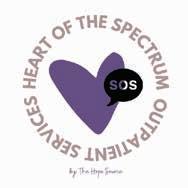





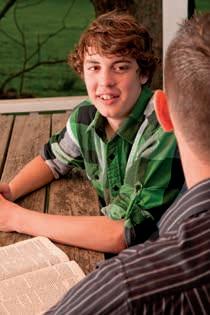

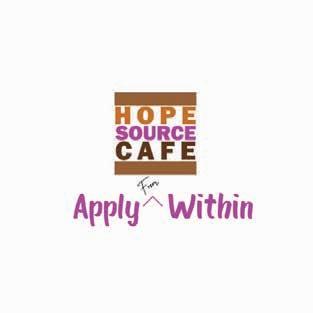




By Aaron Olson
Meagan, Logan, Emery, Hadley, Crew, & Nash

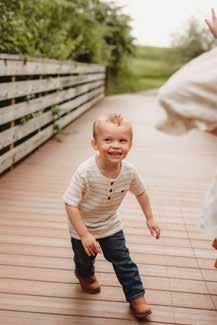

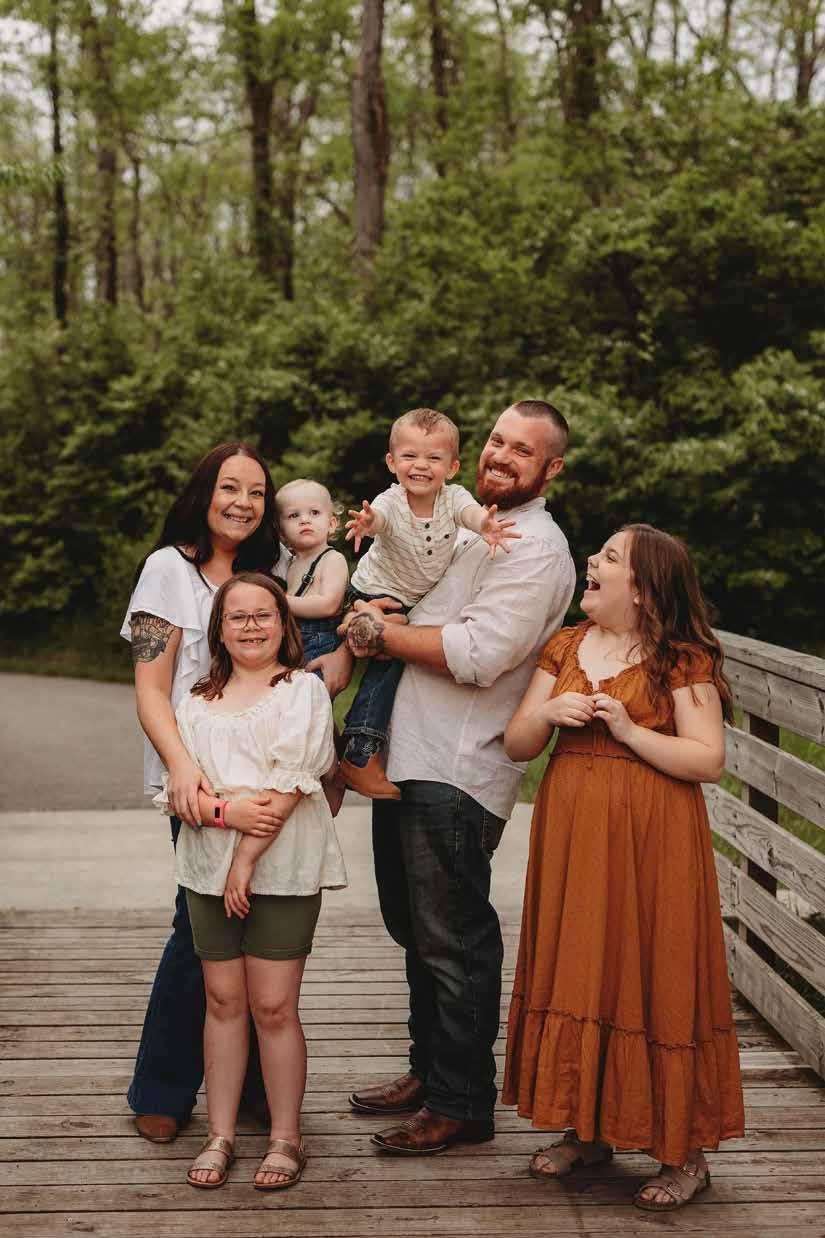

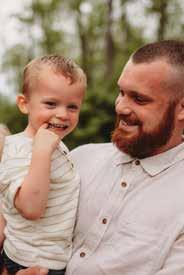

Meagan and Logan Rodgers live with their four children, Emery (9), Hadley (8), Crew (2), and Nash (1), in Whitestown, Indiana. When Crew was about 9 months old, Meagan began to notice something was off about his behavior. Crew had a lot of issues with his gut, and he would engage extensively in repetitive behavior such as opening and shutting a door for hours on end. By the time Crew turned one, Meagan began to push harder for answers. The advice given to her by her family, friends, and even doctors was to wait until Crew was a little older before making any conclusions.
Despite this, Meagan chose to follow her instincts and finally got a referral to First Steps, where Crew was eventually diagnosed with autism. Even though the family strongly suspected autism all along, they still suffered an emotional blow with the official diagnosis. The grief for the loss of the life they had envisioned for their child cast a shadow over the family, and they felt lonely and isolated. Week by week, their son would stop eating and would continually turn to anger and aggression in response to his inability to communicate his needs.
After receiving the diagnosis, Meagan was unable to return to work, and the family had to downsize and change their entire life. Initially, Meagan knew very little about autism, so she decided to educate herself by reading anything she could find to better understand and empathize with Crew’s life experience. Meagan can remember the day she looked into Crew’s little blue eyes and told him, “I won’t try to fit you into my world, [but I’ll try to join you in yours]. Let me see what you see; let me feel what you feel. You are safe with me.” Upon hearing this, Crew’s face lit up for the first time as if he understood the importance of that promise.
Knowing that many of his behavioral problems stem from his inability to tell others what he wanted, Meagan
began to focus their days on figuring out a way for him to communicate. She tried everything from PEC cards to sign language with no results. At some point, she learned about a communication device, and Crew’s speech therapist agreed to try to use the device with his therapy. Within two sessions, Crew communicated with his mother for the first time by hitting the “yummy, more food” button. The smile on his face brought Meagan to tears. To Meagan, that moment changed everything. She was renewed with hope.
Unfortunately, Crew’s eating habits were starting to affect him, and the family was told he would most likely need a feeding tube. Fortunately, Meagan had an idea to use Crew’s sensory table and mix in some feeding therapy strategies with it. “I let him lead me with what interests him and [I] run with it,” she explained. “Every week, we make a new set up, and I’ll add different texture food, snacks, etc., into his sensory table. Little by little, he started trying it and adding new foods into his diet, which was so huge for us!” The family is still figuring out what “does and does not work” when it comes to managing Crew’s behavior and eating habits, but they are thankful to be in a community who helped their child.
“I want people to know they aren’t alone,” says Meagan about other families going through similar struggles. “You can love your child and grieve at the same time. In my personal journal, I had written that I felt that I was completely losing myself; I was spiraling into a hole of feeling so isolated and alone. But we are not. I have a voice that my son taught me was
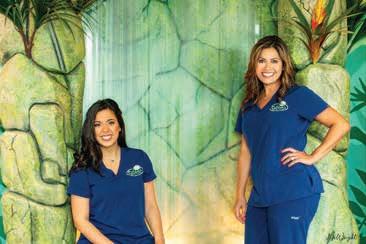

• providing
a privilege to have, and I wasn’t going to let it go to waste. I started reaching out [and sharing our story], and through that met others who just needed to feel heard and understood. I stopped trying to control things that were out of my control and put that energy into controlling what I did have control over. I focused on myself.”
Meagan also encourages people to embrace new traditions that can coincide with having a special needs child rather than forcing older dogmatic traditions that only cause problems. For example, one of Crew’s favorite things is to pretend-drive in the car with his dad. So, for his birthday, rather than have a traditional birthday party, Meagan and Logan set up a birthday parade where they sat in the car and waved and honked at people as they drove by. “He had the best day; I have never seen him so happy and content for so long. Something I once thought he would never experience, he did. We just changed the way we did it into something that fit Crew better!”
Meagan and Logan are still working things out as their son is still very young, and they look forward to continuing to connect with the community. As a final note, they wanted to share their belief that this community is filled with so much love and goodness, and they appreciate all the help they have received thus far.







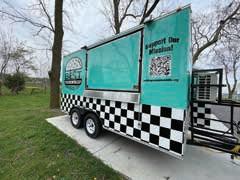


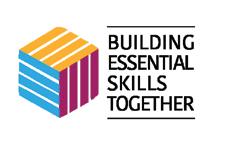
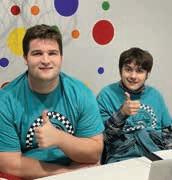


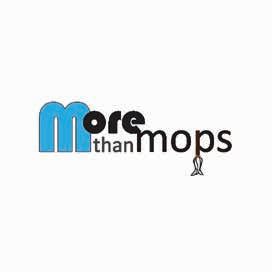

By Christina McGairk




One thing I can’t get enough of is peanut butter or, specifically, peanut butter cookies. They are so easy to make, and you can add just about anything to them: chopped nuts for extra texture or even chocolate, like we did for this month’s recipe.
In this month’s column, I decided to put a gluten free spin on my childhood favorite cookie, PEANUT BUTTER BLOSSOMS!
Now, I would err on the side of caution on a couple of things. Although peanuts/peanut butter are naturally gluten free, there are some brands that may be produced in facilities that also produce wheat products. So picking a peanut butter that is from a certified gluten free manufacturer is best. Some brands include Peanut Butter & Co & Justin’s, which we used. The same can be said for the chocolate. Now I’ll admit we used Hersheys Hugs Kisses since we had a lot left from end-of-the-year gifts we made for TiTi’s teachers. Yet, there are NOT cerrtifed gluten free according to the Hershey website. So if you’re celiac, it’s best to use certied gluten free chocolate.
Okay, I think that’s enough cautionary notes. So on with the baking!
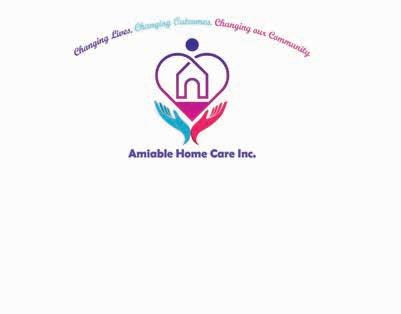
1(16-ounce) package of gluten-free yellow cake mix
2/3 cup creamy certified gluten-free peanut butter (Just to be on the safe side.)
6 tablespoons margarine or butter (We like using vegan butter.)
1 large egg
2 tbsp of milk
2 tbsp of pure vanilla extract
Granulated sugar. We used coconut sugar.
Mix ingredients, minus the sugar
Place the sugar in a bowl.
Form the dough into 1-inch balls and then roll each one in the sugar.
Place them on a cookie sheet.
Bake at 375 for 10-12 minutes.
Gently press the kisses in the middle of the cookie.
· Remove the cookies after a minute and place on cooling rack.
Most importantly, ENJOY! If




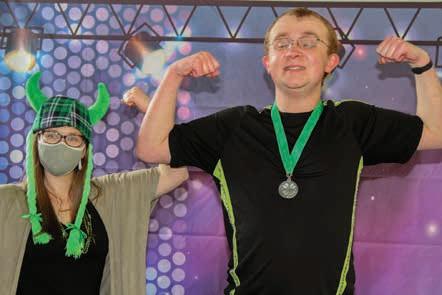





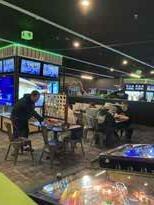



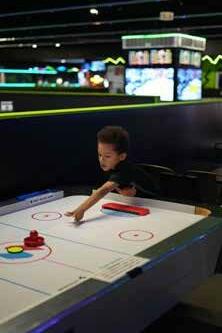
Photos by Eli Walker, Deliver Video
Thank you for coming out to enjoy the Family Fun Day at Press Play Gaming Lounge. Thank you to Press Play Gaming Lounge for opening up your business on a day you don’t typically open to have this private event for the special needs community. Huge shout out to our supporters for helping to cover the costs to make this event free to families. We enjoyed seeing everyone having a great time with the many activities and games and making connections.
If you have not had the chance to check out Press Play Gaming Lounge, we highly recommend it. Below is more information about all you can find there. We look forward to seeing you at our next event.
Our virtual reality stalls are uniquely made for awesome solo games that use new and completely wireless virtual reality technology. We do virtual reality in Indiana! We have a team of virtual reality gaming reps ready to assist in getting you hooked up and ready to enjoy virtual reality. Visit Press Play to jump into virtual reality today!
Experience Foam Wars (Nerf) like no other! Grab a group of friends and battle it out in “Conquer the Flag.” Go a full three rounds of Foam Wars with Nerf weapons of your choice! Get to Press Play and sign up today!








David Yearwood, CFP
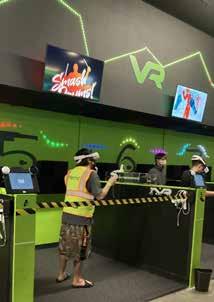
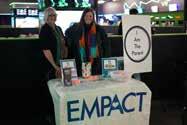
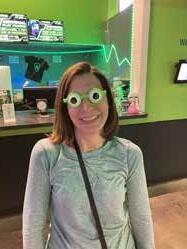

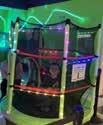
THREE-POINT CHALLENGE at PRESS PLAY
Ball is life at Press Play. Sign up today to play in a three-point challenge! Players take 12 shots in 45 seconds. Players that score at least 10 points will win a prize! Also, ask about the Mega Challenge, where you will go a full three rounds in an attempt to win an Xbox One or 50” Screen TV!
BEAM FOR KIDS at PRESS PLAY
Bring the little ones out to burn some energy in our fun interactive BEAM room. They get to play interactive games that allow them to jump on balloons, fruits, and much more! A virtual playground that makes entertainment for all lively, hygienic, educational, and above all, a ton of fun. The little ones in your family will love stomping and jumping around on BEAM!
ARCADE CORNER at PRESS PLAY
What is gaming without an arcade? Bring the family in to check out our mini-arcade. Our arcade is small but growing every month with new and fun, affordable arcade games. Check out the arcade pricing below.
GAMING and SPORTS ENTERTAINMENT at PRESS PLAY
Bring the family out to dine in while watching sports and playing free games of Xbox on a 75” screen TV. Our gaming pods are perfect for family gatherings and have servers that are ready to serve you! Reserve your TV pod today! Move around from the pod and take advantage of virtual reality, Nerf (Foam Wars), three-point basketball challenge, the mini arcade, or BEAM (interactive play floor)
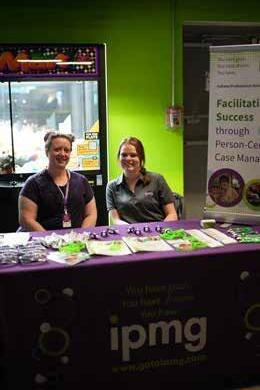


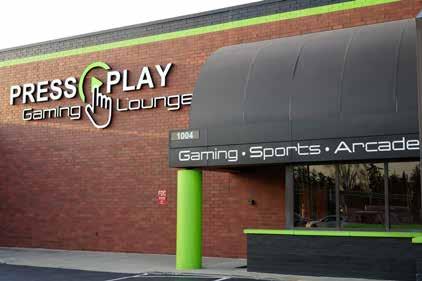
STADIUM FOOD at PRESS PLAY
Enjoy mouth-watering stadium food at Press Play. We have a delicious variety of stadium food that you may be familiar with! Chicken wings, gourmet pizza, chicken chunks, pickle fries ... and more...
BOOK PARTIES at PRESS PLAY
Book a kid birthday, private or corporate party at Press Play. Reserve one of our game pods or party rooms, which comes with unlimited virtual reality, foam wars, BEAM, and basketball. Package pricing varies depending on the size of the party. Enquire today!
1004 E. Main St., Brownsburg, IN 46112
Open Hours: Thurs. 4-8p.m., Fri. 4-10p.m., Sat. 12-10p.m., Sun. 2-8p.m.
317.939.2987
Email: info@pressplaylounge.com
Website: www.pressplaylounge.com “Where Nerf, Gaming, and Parties Collide”







PEAS for Kids specializes in educational consultation, advocacy, and customized assessment plans for children (grades PK-12+).
Assessment plans address emotional concerns and learning disabilities such as Dyslexia, as well as characteristics of Autism Spectrum Disorder and Attention Deficit Hyperactivity Disorder (ADHD).
PEAS for Kids strives to utilize the results of our evaluations to provide recommendations for, and work with parents in advocating for their child's educational needs within the school setting.
Psycho-educational Evaluations and Advocacy Solutions (PEAS) for Kids
Allison M Charette, Ed.S.
Nationally Certified School Psychologist Founder, PEAS for Kids (920) 980-1172 • www.peas4kids.com allison@peas4kids.com
The Duff’s twin boys, Trenin and Kaiden, were both born with Down syndrome, a 1-in-2-million occurrence. After Kearsley wrote her story, we were happy to learn that Trenin is now free of his tracheal tube (“trach”).
You and your siblings (age, grade, and school) Kearsley Duff, age 8; Trenin and Kaiden Duff, age 5.
How has being a sibling to someone with special needs inspired or impacted you? It has inspired me to want to be a doctor when I grow up.
What advice do you have for other siblings who have a special needs brother or sister? To learn their personalities first before you learn how to do their medical care because that will help you with their medical care.
What are your favorite memories with your special needs sibling? My favorite memories are Christmas with them because Kaiden starts just handing presents out to whoever. It also makes me happy to see them so excited about their presents.
What funny stories would you like to share about your special needs brother/sister? I remember splashing in the mud outside with Kaiden just like Peppa Pig does. He loves watching Peppa Pig and imitates what they do.
A funny story about Trenin was when he grabbed his birthday cake and smeared it all over or when he dressed like Donald Trump for Halloween a few years ago.
Do you admire your special needs siblings? What makes them special, and how have they motivated you? I admire how they are different. They always stand out because Trenin has a trach, and Kaiden has no hair. People then ask questions, and I can tell them all about my siblings. They motivate me by just being themselves.
What are a few of the challenges you experience with having a sibling with special needs, and how have you overcome these challenges? A big challenge is that I don’t always get the attention I want. I have overcome that by asking mom and dad to split 1:1 time with me.
How do you enjoy spending time, and what is your favorite thing to do with your special needs sister/ brother? My favorite thing to do with them is when we get to go on special trips like to Conner Prairie or the pumpkin patch.
Any additional comments or thoughts? My thought is that even though it can be hard at first to understand why a lot of people won’t understand your brothers, you’ll find people that understand them at some point and a friend who truly understands what you are dealing with.
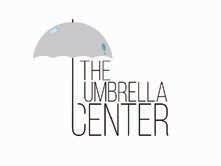
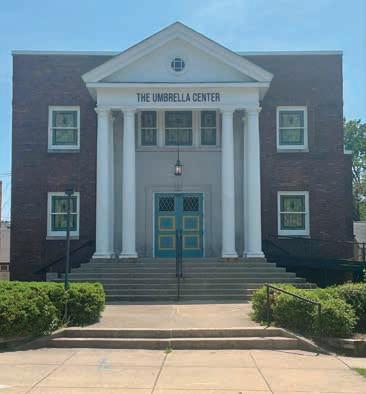



Making sure adults with disabilities are taken care of in the future and have fun along the way.
Buttermilk Mountain is excited to offer adults with disabilities the opportunity to create Buttermilk’s Biscuits, all natural pumpkin dog treats. Making the Biscuits teaches the Bakers important life and job skills, including:
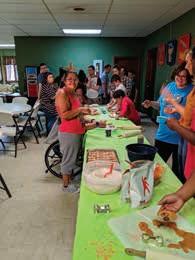
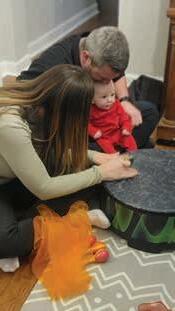
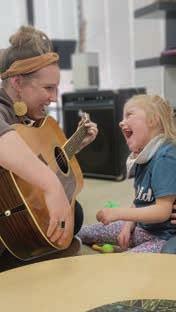











Early Childhood Music Classes Sign & Sing Virtual Classes
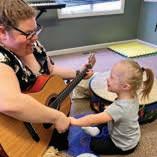
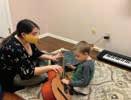

Music Therapy can help individuals of all ages and abilities, including those with:
Alzheimer’s Disease and Dementia ° Autism ° Cerebral palsy
Developmental Disabilities ° Down Syndrome
End-of-life care (Hospice) ° Intellectual Disabilities
Mental health ° Neurological disorders
Psychiatric disorders ° Rehabilitation

7502 Madison Ave, Indianapolis, IN 46227 (317) 829-6654

dynamicmusicservices.com
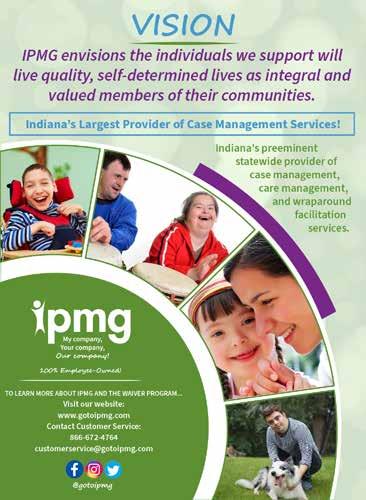
Are you looking for parenting tools that can help you?
Is your child on the Community Integration and Habilitation and Family Support Waivers in the State of Indiana?
If so, then you should participate in our Empact Parenting programs that we are hosting in May!
Learn more and register via this link: https://bit.ly/3vG5nem
Or, scan this QR code:
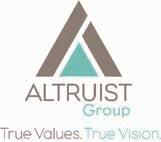



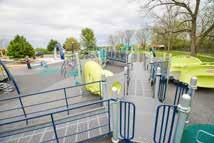


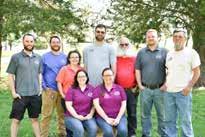

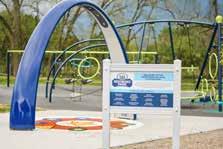


By Maria Smietana

individuals,” said former Johnson County Parks and Recreation Superintendent Megan Bowman. “We recently remodeled the playground and added additional parking in 2020.”

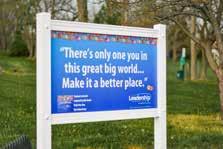
Inclusive parks with playgrounds that are accessible to special needs kids are popping up in many places, but Independence Park in Johnson County has been quietly serving area residents for 22 years now. Opened in 2000, the 13.5-acre property is home to Indiana’s first all-accessible playground for children with disabilities.
“The park was created with the help of over 200 businesses, civic organizations and
The playground area, for kids ages 2-12, was designed with allinclusive components, and for added safety, rubberized surfacing was installed under each component. A large gazebo with benches overlooks the playground area.
Kids who want to interact with other kids can experience the Yalp Sona arch, described by its developers as a “truly inclusive dance and play arch where audioguided games are played in motion.” For visitors with sensory issues, the park has a sensory-friendly music area, in the near future.
Other park features that are great for visitors with mobility challenges include a ¼ mile wheelchair accessible zero grade asphalt trail, a ¾ mile asphalt hiking trail, and a wheelchair accessible basketball court that smaller children can enjoy, too.
A portion of one of the trails features a StoryWalk® installation, where pages from children’s books are displayed in weatherproof frames at intervals along the path. Kids are led from one case to another, taking in the story and pictures as they go. One of many StoryWalk® installations around the country, this one comes courtesy of the Johnson County Public Library and the Center Grove
Rotary Club. The books are changed seasonally by the library.
“County parks provide passive recreational opportunities, which allows for the public to enjoy the open greenspace, trails and play areas as they like,” Bowman said. “Since Independence Park is the only greenspace in unincorporated White River Township, it is a very popular park.”
Johnson County Parks and Recreation became a sponsor of Special Needs Living because they support the mission of the magazine, Bowman said. She wants word to get out about Independence Park so that it can be a resource to anyone who might need it.
Bowen further encourages people to reach out and develop a relationship with their local parks department, no matter where they live. “If there is a piece of equipment or change to a facility or amenity that you would like to see, be sure to let them know,” she said. “Feedback is very important to what we do, and it is very helpful to know how our choices might impact others and their lives. We appreciate citizens and organizations that are willing to be a resource for us!”
Independence Park is open daily year-round from dawn to dusk. Three picnic shelters are available for rent. Visitors should be aware that the roadway and walking trails are not maintained in the winter months, and the park is closed during times of heavy snow and ice.
Johnson County Parks and Recreation is still accepting donations to offset the cost of the playground remodel. To learn more or to make a donation, see the contact information below.
Kevin
Leonard Superintendent (Interim) kleonard@co.johnson.in.us (812) 526-6809 x:102 www.jocoparks.com
Facebook: @jocoind
Facebook: @injocoparks
Instagram: @in_jocoparks jocopark@co.johnson.in.us

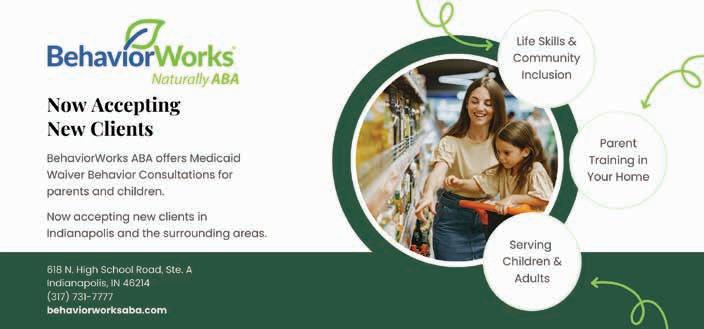

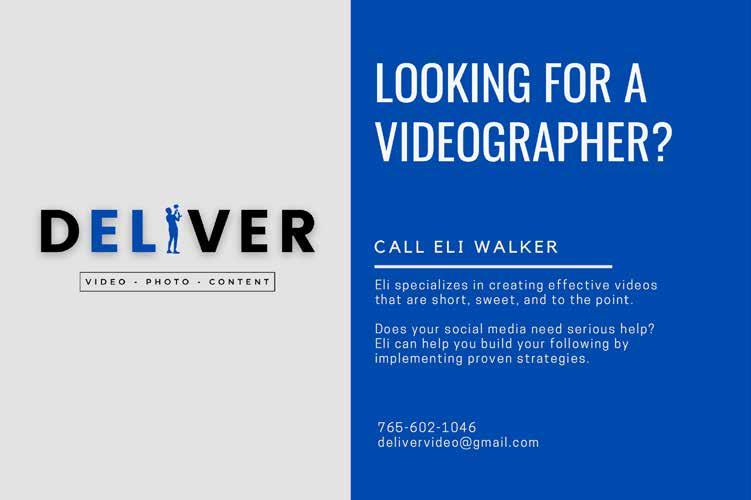

T h e A p p l i e d B e h a v io r C e n t er f o r A ut i s m i s I n d i a n a ’ s
l o n ge st r u n n i n g A B A t h e r a p y p r o v i d e r . F o u n d e d i n 19 9 7 b y
t h e m o t h er o f a c h i l d w ith au t i sm, A B C ha s s i n c e o p e n e d 1 2 lo cati o n s t h r o u g h o ut t h e s t a t e a n d d e v e l o p e d a n i n - h o u s e r e s e a r c h d e p a r t m e n t .
E
r ly C h i l d h
n W e o f f e r a w i d e r v a r i e t y o f s e r v i c e s f or c h i l d r en a n d t ee n s w i t h a ut i sm, i nc l u d ing: Carm el G r ee n woo d
I n t e r v e n t i
S pe e ch T h e r
p
o lis W e s t Cen tr a l W e s t
mo n d
e r s T e r r e H au t e C e nt r al W e st B ehavio r al U ni t E a r ly C h il d h oo d C e n t e r - S o u t h
i anapo l is N o r t h